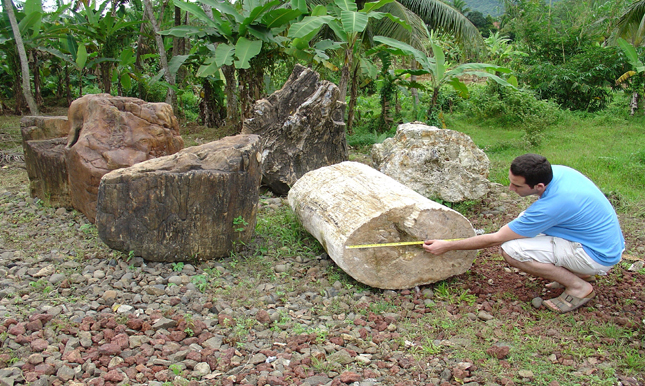Barlas Baylar and His Designs
The Life, The Philosophy
Widely recognized for his minimalist conceptions that unite organic nature with sleek antiseptic postmodernism, Barlas Baylar specializes in that approach which is based on direct experience, a lifestyle in itself as well as an aesthetic that embraces the without from the within. Such is the anthem of modern design in upscale furniture that has been adorning celebrity mansions and high-profile residences, thanks to the twenty-four workmen who labor to transform Baylar’s visions into the utilitarian artwork that are not aspirations towards personal statements or expressions but solemn pieces that are also spontaneous, planned by man while crafted by nature herself. Only in this way can each piece be truly unique, with no two quite the same. Surfaces are not merely sanded down, but burnished by hand with broken glass to reveal nature’s own eternal handicraft beneath. George Nakashima’s insight, that in a world where modernity is identified with the machine while traditions are shunned, wrote of such arts that they “might even be a question of regaining one's own soul when desire and megalomania are rampant – the beauty of simple things.” A commitment to the preservation of natural beauty informs Baylar’s very way of working. Not just some detached admirer of nature from afar, he is deeply devoted to the exclusive use of certifiably sustainable materials in his consoles, panels, sofas, and mirrors, such as domestically sourced dead and dying lumber damaged by wind or storm. Some come from trees removed by their rightful owners in order to prevent damage to houses or other trees. Even the official recognition of foreign embassies and consulates are sought when it comes to necessary imports.
Thus does the subtlety of its own materials lend the noblest elegance – which is to say the most prescient of reverence – to works honestly crafted, bearing no thought of accolade or sale. Walking through Baylar’s showrooms at Hudson Furniture is walking into a world where nature has been re-interpreted by architecture and the 21st Century yearns for millennia past. There one can view the evolution of chandeliers, tables, bed frames and their headboards. Metal, wood, glass, and stone have been re-imagined to clothe civilization. Chain chandeliers display softly curving waves of metallic piping that trace the descent of light through glass strands dripping like fringe off sleeves. The bittersweet majesty of expiring trees is preserved forever in the solid slab of a seat. Then there are those accessories which appear at once stone and wood – naturally, petrified wood, the best of both worlds.





